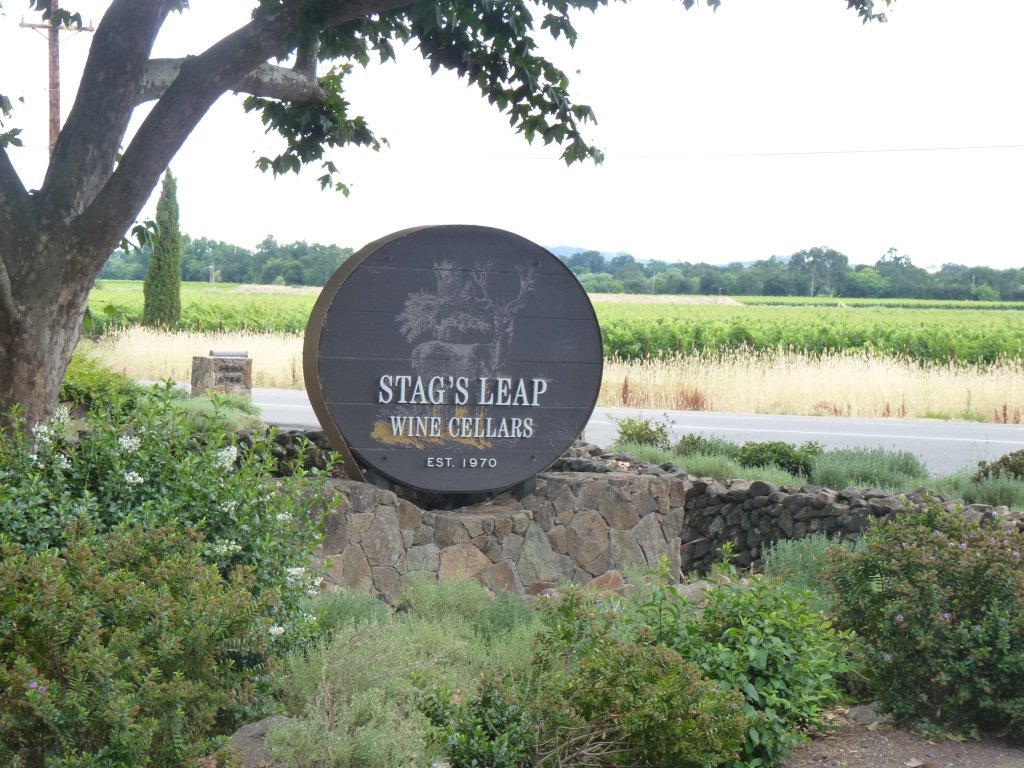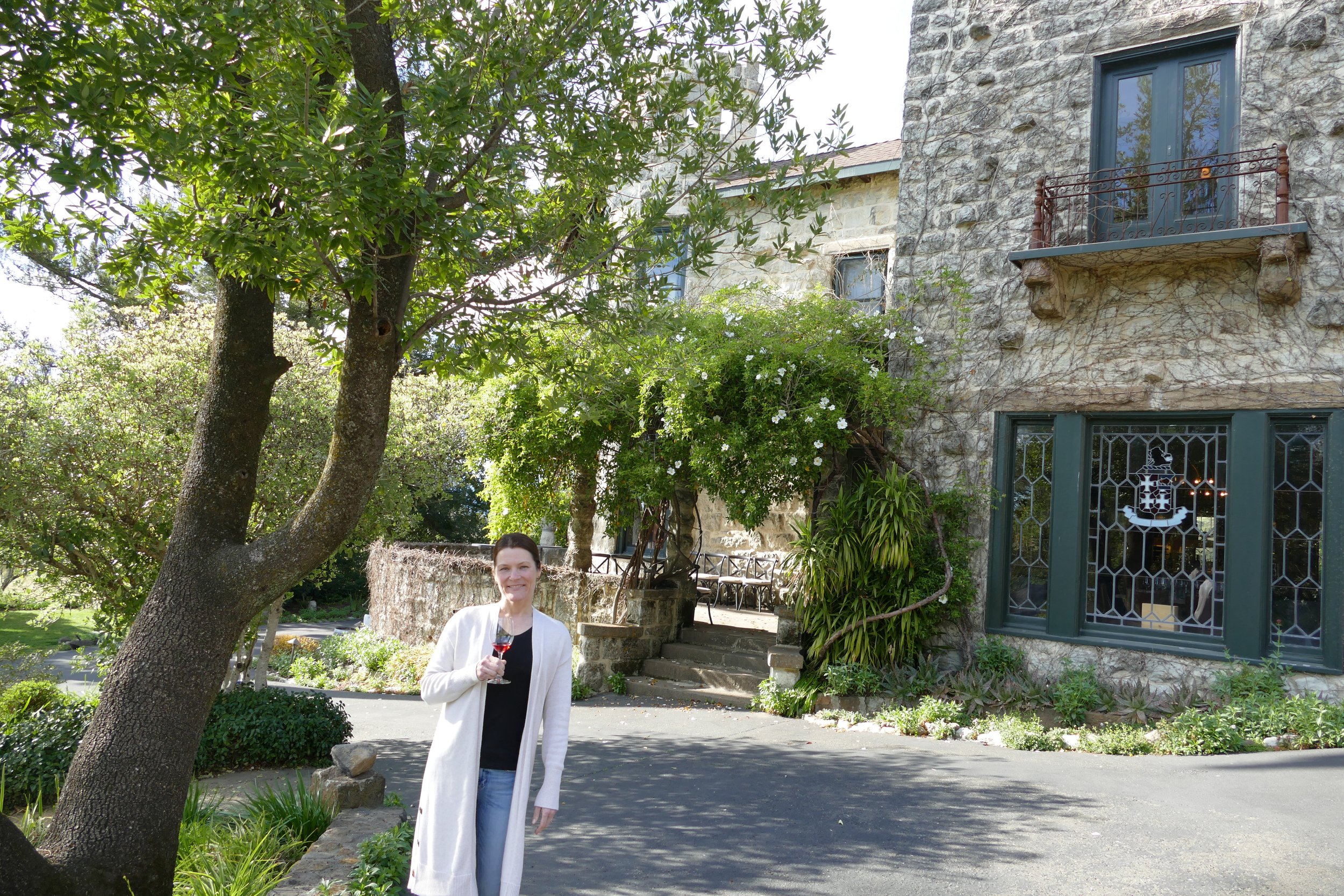Historical, legendary and somewhat confusing. What came first, the chicken or the egg? The apostrophe in Stag’s Leap before or after the « s »? It might well be the most expensive apostrophe in the history of the winemaking world. This article will debunk any misconceptions on Stag’s/Stags’/Stags Leap. Many have confused the three names, and it’s an honest mistake to make. So let’s take a step back to differentiate between the three as there are commonalities as well as important distinguishing characteristics.
Stags Leap
Stags Leap is the sub-AVA (American Viticulture Area) located in Napa Valley AVA. It was established as an AVA in 1989. Both its climatical influences, location and soil all contribute to the signature “iron fist in a velvet glove” stylistic profile. Firstly, it is a low valley at 112 meters above sea level. The valley is three miles wide and one mile long between the Stags Leap Palisades to the east and the Napa River to the west. The Stags Leap Palisades rocky terrain reflects heat and creates a hotter environment. However, the valley is a natural wind tunnel bringing in marine breezes and fog from the San Pablo Bay which provides cooling influences for the warm daytime temperatures. As a consequence, naturally lower overnight temperature slows down ripening to create the ideal balance between acid and sugar. These conditions also extend the growing season with warm days and cool nights ensuring the sufficient later ripening varieties such as Cabernet Sauvignon ripen successfully. Lastly the regions soils are predominantly volcanic gravel on the valley floor with sandstone, shale rocky hillsides surrounding similar conditions to the Left Bank of Bordeaux, the birthplace of Cabernet Sauvignon. The lower fertility, good drainage and hard clay subsoils all contribute to softer plush tannins and ripe fruit while retaining fresh acidity. All of these factors contribute to bold and beautiful wines renowned and revered worldwide .
There are two wineries named after this region. One with the apostrophe before the s and one after, as well as similar looking labels of stags leaping. It is very common for people to confuse the two because the names are so similar, they are located in the same district of Stags Leap (and are in fact neighboring estates!), and both are named after the legendary stag who evaded hunters by leaping across the district (hence the name) –. In addition, both make equally high quality wines with each having a distinct “signature wine” that does separate the two. It is not surprising that there is so much confusion.
Stag’s Leap
In 1961 Nathan Fay planted the first Cabernet Sauvignon in the Stags Leap district which most believed the area was too cool to ripen the variety. He released his homemade 1969 which defined the style of Napa Cabernet. Winemaker Warren Winiarski tasted Nathan’s wines and had his aha moment… this is the essence of Napa terroir and what the wines should be. The following year, he purchased a 44 acre property neighboring Nathan’s, which he named Stag’s Leap Wine Cellars. He was determined to make beautiful wines, removed the plum, cherry and walnut trees and replanted predominantly Cabernet Sauvignon and a small amount of Merlot. Fast forward to 1976. The winery presented its 1973 S.L.V. Cabernet Sauvignon at the historic 1976 Judgement of Paris. A wine event organized by the late, great Steven Spurrier, an English wine merchant in Paris whereby French wine experts blind tasted both American and French wines. It was at this event that the Stag’s Leap legendary Cabernet Sauvignon unanimously defeated the top Bordeaux first and second growths from 1970 and 1971 vintages from Château Haut-Brion, Château Mouton-Rothschild, Château Leoville Las Cases and Château Montrose to many of the French chagrin. This winning (amongst other winners at the event) elevated Napa’s status and fame internationally.
Stags’ Leap
However, Stags’ Leap winery’s history is much older – having originally established in 1872. The 240 acre property, of which 80 acres were vines, was planted in 1872 by Horace Chase and his wife Minnie Mizner Chase. They entertained quite lavishly at the stone Manor House estate with the San Francisco elite and were known for their opulent hospitality and parties. In 1882, the 80 acres of vineyards were producing grapes but they didn’t have a winemaking facility. Horace decided to build a 150 foot wine cave called the Old Stone Cellar, the first of its kind in the eastern part of Napa Valley. Later in 1909 due to financial misfortune, the Chases lost the house and remained stagnant winemaking wise due to prohibition. The estate was later purchased by the Granges, wealthy San Francisco socialites who turned the Manor House into a resort. They continued to grow and sell their grapes but never produced any wines. The property remained unused after their deaths until 1970 when Carl Domain and his wife Joanne purchased the property. The three decade restoration project fully restored the natural beauty of the property – Manor House, Old Stone Cellar, the gardens, the vineyards and winemaking facilities to the grand facility that it is today. Their signature wine is a Petite Sirah amongst other elegant and finessed wines.
Stag’s Leap vs Stags’ Leap
Following the 1976 Judgement of Paris, the fame and confusion with consumers continued. Frustrations led Stag’s Leap to sue Stags’ Leap in order to retain the name. The case was so tenuous as no one could prove who named their winery first. As mentioned above both were established around the same time, they released their wines at the same time. It went all the way to the California Supreme Court. The verdict was both wineries had the right to use the name with a slight grammatical change which would discern between the two. Stag’s Leap would use the apostrophe before the S, and Stags’ Leap would use the apostrophe after the S. The owners became friends after the settlement and released a 1985 vintage Cabernet Sauvignon made of equal amounts of grapes from each estate called Accord, meaning agreement in French. Today both wineries are owned by larger wine brands. Stag’s Leap is owned by a joint venture of Chateau St. Michelle and Antinori and Stags’ Leap owned by Treasury Wine Estates, Australia’s largest wine company.
While I thoroughly enjoyed my experience at both tremendous wineries, they are both unique in their own way. Stags’ Leap was full of history, very picturesque and has a refined interior. The tasting accompanied by an informative tour from the outdoor gardens to the speakeasy cellar to the stone Manor House transported you back in time. Stag’s Leap was unassuming –it felt more like a casual Napa hang out tasting renowned wines instead of at the famed Judgement of Paris winner. John, our host, served us a vast lineup while regaling us with stories of the winery. There was no pretension, just a group of wine passionate people chatting about the wines for hours on end as he pulled out older vintages as a treat to the visiting Canadians. It was personal, intimate, unforgettable. A trip to Napa would not be complete without visiting both wineries as they are uniquely legendary and historical in their own way.
Version of this article published with Passion Des Vins on August 15, 2023:: Stags Leap/Stag’s Leap/ Stags’ Leap











